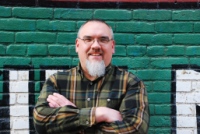
The community bit to science is often the ignored, undervalued piece of the scientific process. Collective knowledge needs to be collected and then dispersed among the collective.
Totally confusing, right?
Well, it is if you think about science as we’ve been generally taught…as a static thing. We’ve been ingrained to think of science as only a rather dull series of steps. How many times have you had to list the steps of the SCIENTIFIC METHOD on a test? I wish I had a dollar for every time I did!
- Observation
- Discovery
- Hypothesis
- Test
- Conclude
- Communicate

Sarah Greenwood, CC BY 4.0 <https://creativecommons.org/licenses/by/4.0>, via Wikimedia Commons
But science is so much more than just a few memorized steps in a process. What has often been overshadowed in science is the “aliveness” of science. We too often think about science as an individual or small group activity of people isolated in a laboratory, office, or at a site going about their business. We think of science as static. The same misconception holds true for technology, engineering, and mathematics. Lifeless and mundane egghead stuff.
But STEM is so much more. It’s vibrant and alive! It’s all around us. It affects all of us. Science is a tool we use to explain the world around us. Technology, engineering, and mathematics are the tools we use to help science define our world and then manipulate it. And STEM needs you.
As much as science affects the community, community affects science. Whether it’s an individual or group participating in a scientific study to collect data points for a research group or science information being presented to a population, the community plays a vital role.
It’s TEAMWORK!
What better way to learn and appreciate science than by participating in science? Shared experience. Now, that’s the value of community science. With many eyes, bodies, and brains at work, the more alive the science is. Community science spreads the load in both directions. It helps cover the necessary ground to turn an unknown into a known by gathering and then distributing the information.
Within the realm of community science, there is a multitude of opportunities covering just about any interest. From open code sourcing software to bird counts, to data analysis, to at-home CRISPR gene-editing, there’s something for everyone. Find your particular jam and give it a shot.
Community Science for the win!
- Teamwork
- Spread the load
- Cover the ground
- Gather the information
Teamwork makes the dream work!

Mount Rainier NPS, CC BY 2.0 <https://creativecommons.org/licenses/by/2.0>, via Wikimedia Commons
Mike Hays has worked hard from a young age to be a well-rounded individual. A well-rounded, equal opportunity sports enthusiast, that is. If they keep a score, he’ll either watch it, play it, or coach it. A molecular microbiologist by day, middle-grade author, sports coach, and general good citizen by night, he blogs about sports/training-related topics at www.coachhays.com and writer stuff at www.mikehaysbooks.com. Two of his science essays, The Science of Jurassic Park and Zombie Microbiology 101, are included in the Putting the Science in Fiction collection from Writer’s Digest Books. He can be found roaming around the Twitter-sphere under the guise of @coachhays64 and Instagram at @mikehays64.
The O.O.L.F Files
This month’s version of the O.O.L.F.(Out of Left Field) Files provides resources to get involved in community science projects.
Looking for a community science project? Check out these resources!
-
CitizenScience.gov “Helping federal agencies accelerate innovation through public participation.”
- CitizenScience.gov’s Resource Page
- SciStarter
- Community Science “Let’s Do Some Good Work Together”
The one and only Audubon’s Christmas Bird Count!
CRISPR at Home – Gene editing for anyone!
- Cornell’s eBird app (I started using this in March 2022 and LOVE IT!)

